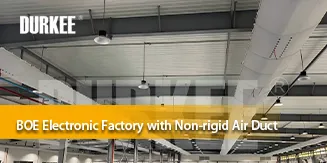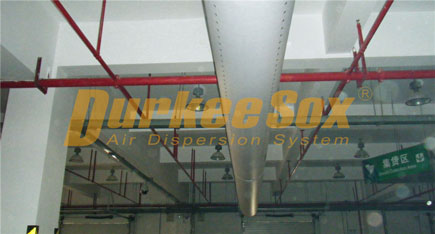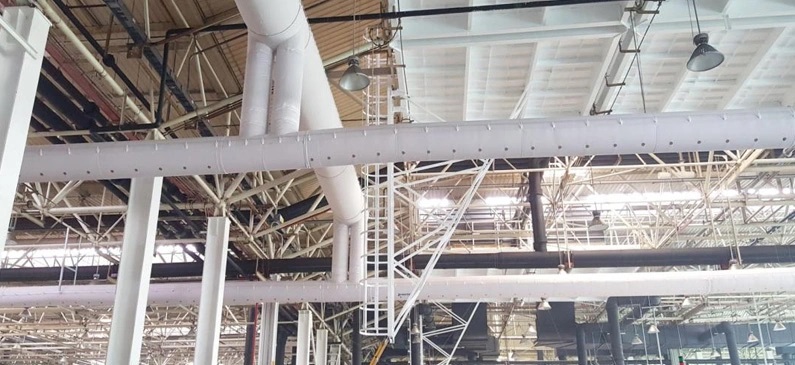 BOE Vietnam Factory: Non-rigid Air Duct Solutions for Electronic Industry
BOE Vietnam Factory: Non-rigid Air Duct Solutions for Electronic Industry
 Why Fabric Air Ducts Are the Preferred Choice for Ventilation in Large Spaces
Why Fabric Air Ducts Are the Preferred Choice for Ventilation in Large Spaces
 The Difference Between Non-Rigid Air Ducts and Rigid Ductwork
The Difference Between Non-Rigid Air Ducts and Rigid Ductwork
In architectural design, the HVAC(Heating, Ventilation, and Air Conditioning) system is pivotal for functionality, health, and visual appeal. Fabric air dispersion systems have gained popularity among architects for their blend of style and practicality. This article explores why architects are increasingly selecting fabric ducting solutions over traditional metal and galvanized steel ductwork, highlighting their advantages in terms of aesthetics, health, cost-effectiveness, and technological performance.
The fabric air ducts offer architects the flexibility to customize the color scheme and even incorporate custom visuals or logos, aligning with the interior design. Despite certain limitations in color options, the personalization capabilities allow for a seamless aesthetic integration. The lightweight nature of fabric ducts makes them suitable for unique structural projects, such as those with light-steel structures, without adding significant weight.
Fabric air dispersion systems are designed to provide even air dispersion, eliminating hot and cold spots for a uniform temperature. The soft fabric material absorbs sound, creating a quieter environment. With reduced dust and bacteria collection, these systems contribute to improved indoor air quality and fewer allergens, ensuring a healthier space for occupants.
Fabric ducting system is economically viable, offering savings in transportation, installation, and maintenance. The lightweight and flexible fabric simplifies the installation process, reducing labor and material costs. More energy-efficient than traditional systems, fabric ducts can use up to 40% less energy, leading to significant long-term savings.
Technologically advanced, fabric-based air dispersion systems ensure consistent air distribution with perfect mixing for various applications, including isothermal, heating, cooling, or combinations thereof. The design flexibility allows for customization to complement any architectural layout. Fabric ducts naturally resist condensation, rust, and bacteria, making them ideal for industrial facilities requiring fireproof materials.
The combination of aesthetics, health benefits, cost-effectiveness, and technological performance positions fabric air dispersion systems as a popular choice for architects. As the construction industry moves towards sustainable practices, fabric ducts offer a sustainable and future-proof solution for modern architectural projects. For architects aiming to create spaces that are both beautiful and functional, fabric ducting systems present an attractive and forward-thinking option.